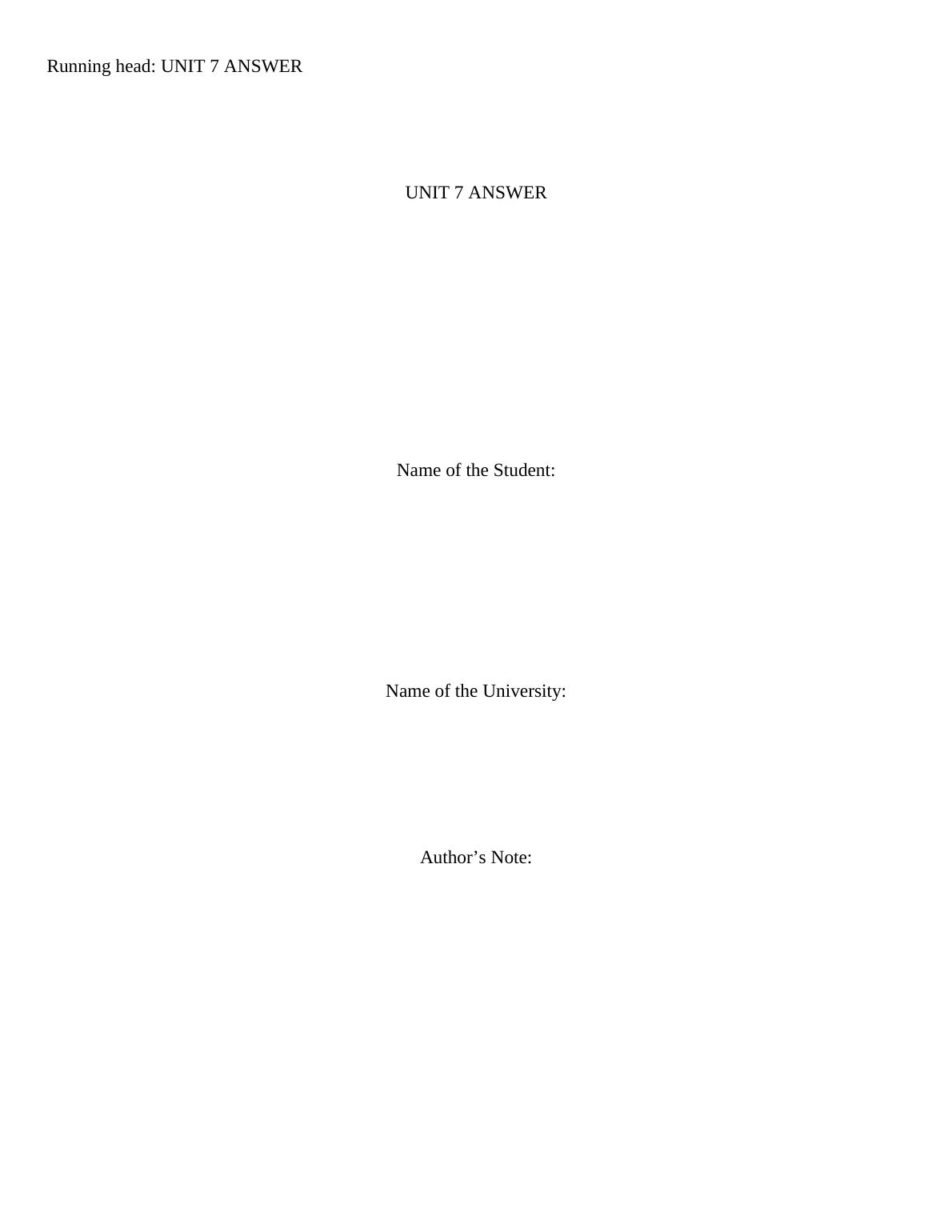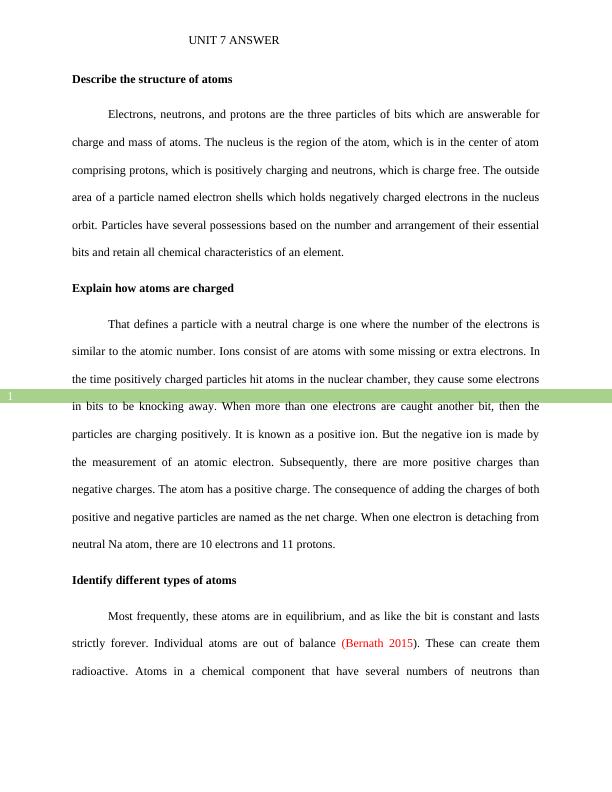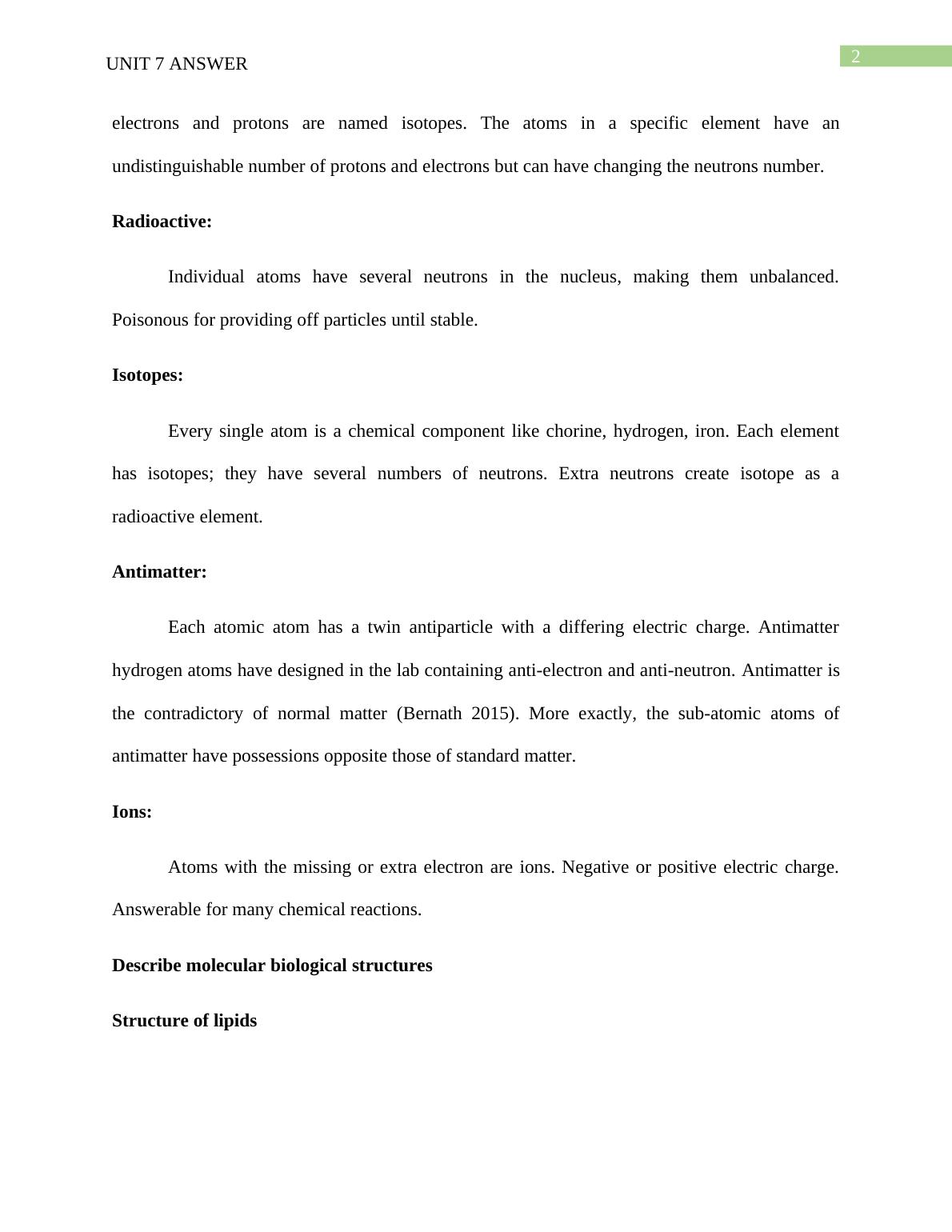Structure and Types of Atoms
Describe the structure of atoms, explain how atoms are charged, identify different types of atoms, describe biological molecular structures, explain how molecules join, explain the role of molecular components to the sustainability of human life, explain the function of biological molecules in the human body, describe the role of biological molecules in homeostasis, explain problems associated with impairment of molecule function, describe the structure of human cellular organelles, explain the transportation processes of cellular substrates, discuss the role of cellular transportation in homeostasis.
Added on 2022-08-18
Structure and Types of Atoms
Describe the structure of atoms, explain how atoms are charged, identify different types of atoms, describe biological molecular structures, explain how molecules join, explain the role of molecular components to the sustainability of human life, explain the function of biological molecules in the human body, describe the role of biological molecules in homeostasis, explain problems associated with impairment of molecule function, describe the structure of human cellular organelles, explain the transportation processes of cellular substrates, discuss the role of cellular transportation in homeostasis.
Added on 2022-08-18
End of preview
Want to access all the pages? Upload your documents or become a member.




